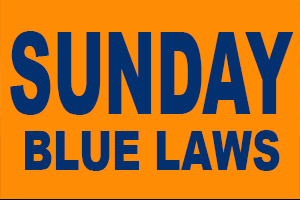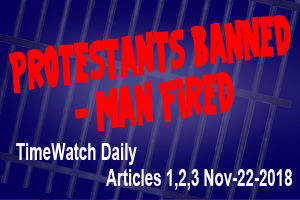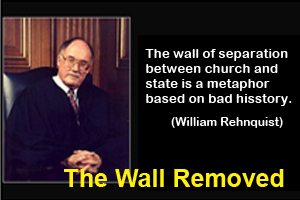
Another Dictatorship
TimeWatch Editorial
January 31, 2017
Today, whenever we think of a dictatorship, our minds tend to drift in the direction of Germany and Adolf Hitler. Of course there have been and still are many dictatorships in the world today, yet we instinctively recall the tremendous impact of the Nazi era. The History Learning Site however informs of another authoritarian structure that, even though its impact was also profound, is not always remembered. Listen to the following.
“Mussolini’s road to a dictatorship took much longer than Hitler’s in 1933. Hitler was appointed chancellor on January 30th 1933. By April 1st 1933, his power was such that, after the Enabling Act, Hitler could only be seen as the dictator of Nazi Germany regardless of Hindenburg’s presidency. Mussolini’s public posturing and boasts did not guarantee loyalty in Italy – hence why it was so important for him to establish a relationship with the Roman Catholic Church. He only gained what could be described as dictatorial powers after the Lateran Treaty whereby he could guarantee loyalty from those Catholics who may well have not been supporters of the fascist state in Italy.” C N Trueman, "Mussolini’s Dictatorship" The History Learning Site, 25 May 2015
The most interesting trigger to Mussolini’s ascent to ultimate power was in conjunction with the Lateran Treaty. According to the Encyclopedia Britannica, “the Lateran Treaty, also called Lateran Pact of 1929, treaty (effective June 7, 1929, to June 3, 1985) between Italy and the Vatican. It was signed by Benito Mussolini for the Italian government and by cardinal secretary of state Pietro Gasparri for the papacy and confirmed by the Italian constitution of 1948.
Upon ratification of the Lateran Treaty, the papacy recognized the state of Italy, with Rome as its capital. Italy in return recognized papal sovereignty over the Vatican City, a minute territory of 44 hectares (109 acres), and secured full independence for the pope . A number of additional measures were agreed upon. Article 1, for example, gave the city of Rome a special character as the “centre of the Catholic world and place of pilgrimage.” Article 20 stated that all bishops were to take an oath of loyalty to the state and had to be Italian subjects speaking the Italian language .”
Before the Vatican lost its power to rule, beginning in the year 1798 their control was indeed pervasive. David Allen Rivera, in his book entitled “A History of the New World Order,” says the following.
“For years, the Popes ruled a 16,000 square mile area in central Italy, which was referred to as the Papal States. That was reduced to about 4,891 square miles in 1860 when the Kingdom of Italy was formed. In September, 1870, Italian troops marched on Rome and ended the temporal power of the Pope, and limited his sovereignty to the palaces of the Vatican, the Lateran in Rome, and the villa of Castel Gandolfo. On February 11, 1929, Cardinal Gasparri and Italian Premier Benito Mussolini signed the Treaty of Conciliation (known as the Lateran Agreement), which established the independent state of Vatican City, and also made Catholicism the official religion of Italy. The agreement compensated the Vatican for their lost land ($40,000,000), and transferred about 5% of the government’s bonds (about $50,000,000) to them. The Lateran Treaty was made part of the Italian Constitution (Article 7) in 1947.” David Allen Rivera, “A History of the New World Order, “page 570
In today’s world, those numbers may not seem to be very large, but when you compare the value then with the value of the same amount today, the numbers are impressive. $90,000,000.00 in 1929 would be the equivalent of $1,156,573,684.21 in 2010.
It is important that we must recognize that the rise of Papal restoration blended with the established dictatorship of Benito Mussolini. These two elements functioned together. So it is that Ecclesiastes 1:9 in more than a poetic statement, but a truism.
Ecclesiastes 1:9 The thing that hath been, it [is that] which shall be; and that which is done [is] that which shall be done: and [there is] no new [thing] under the sun.
Here is how Mussolini grasped and maintained his power.
“The workers were promised an eight hour day while an inquiry into the profits made by the industrialists during World War One was dropped. The rich benefited from a reduction in death duties – now, under Mussolini, more of what someone had earned during their lifetime, went to their family and not the government. To get support from the Roman Catholic Church , religious education was made compulsory in all elementary schools. These policies can be seen as an attempt to ‘buy’ support. As an example, in 1933 Hitler introduced workers holidays into Germany (similar to a bank holiday). This was very popular. He then almost immediately banned trade unions which protected workers rights. Any protests over this were banned as a result of the Enabling Act – Hitler did not bargain with anyone. Mussolini was not in a position whereby he could assert his authority and it is probable that the extent of his dictatorial powers never did equal those acquired by Hitler.” C N Trueman, "Mussolini’s Dictatorship" The History Learning Site, 25 May 2015
Another of the elements of Mussolini’s establishment of totalitarianism was a change in the method of electing representatives. Note the following:
“Mussolini had never intended to share power with the liberals who were in the government. He introduced a Fascist Grand Council which would decide policy for Italy without consulting the non-fascists in the government first. In February 1923, Mussolini and the Fascist Grand Council introduced the Acerbo Law. This law changed election results. Now if one party got just 25% (or more) of the votes cast in an election, they would get 66%of the seats in parliament. When it came for Parliament to vote on the Acerbo Law, many politicians agreed to a law that would almost certainly end their political careers if they were not fascists.” C N Trueman, "Mussolini’s Dictatorship" The History Learning Site, 25 May 2015
Indeed we must remember, that the thing that hath been, it is that which shall be; and that which is done is that which shall be done: and [there is] no new thing under the sun. Ecclesiastes 1:9
Be warned.
Cameron A. Bowen







